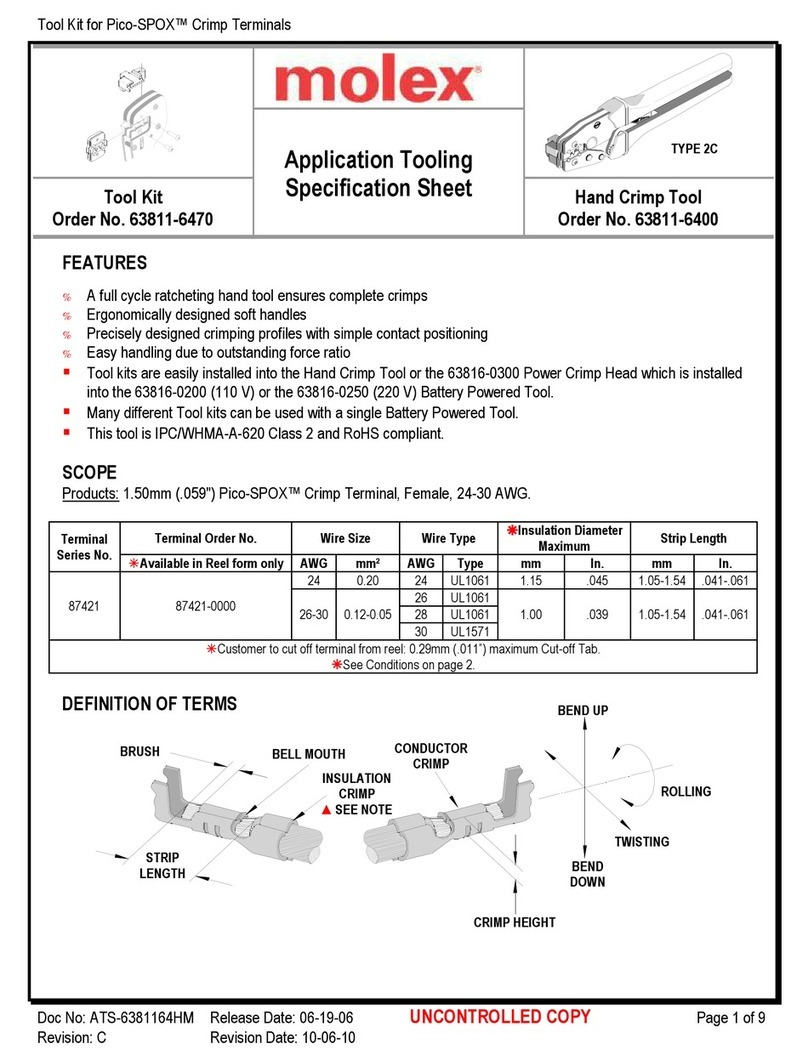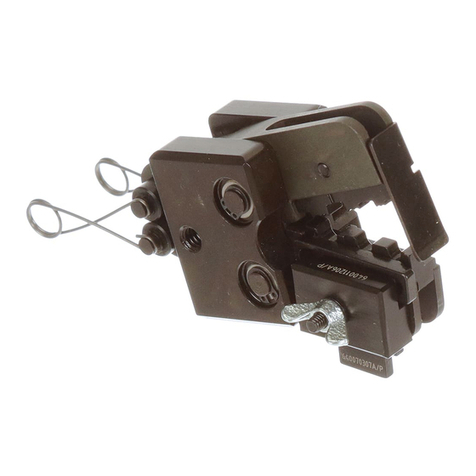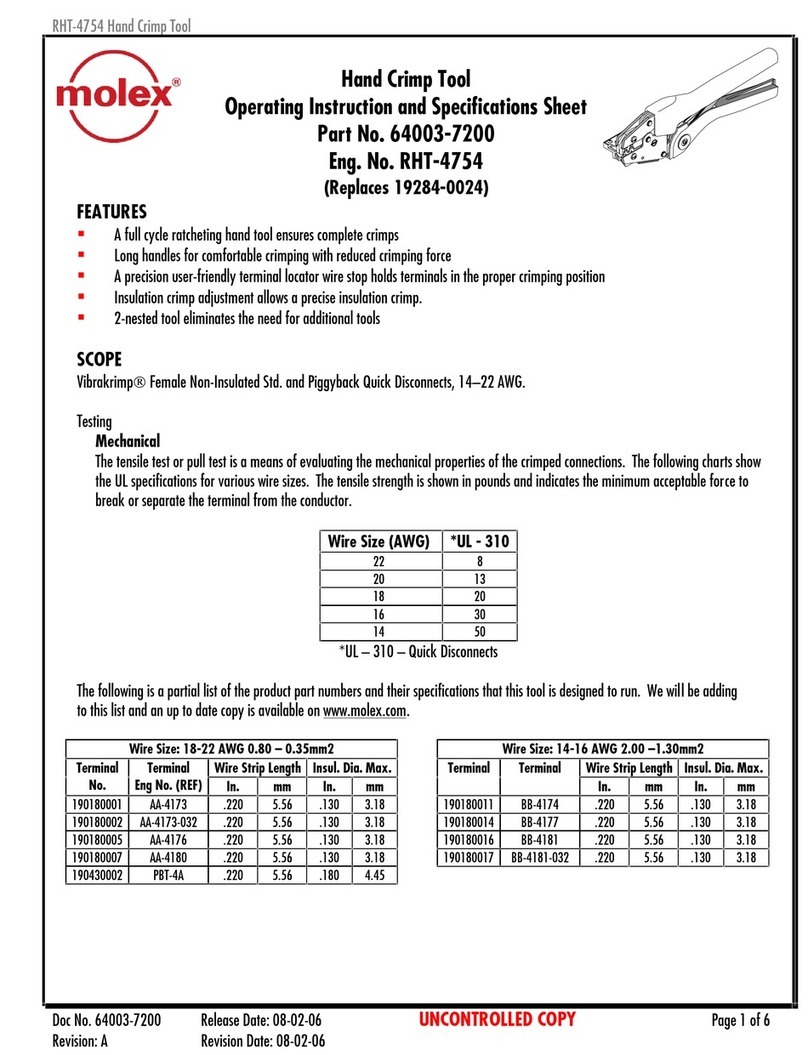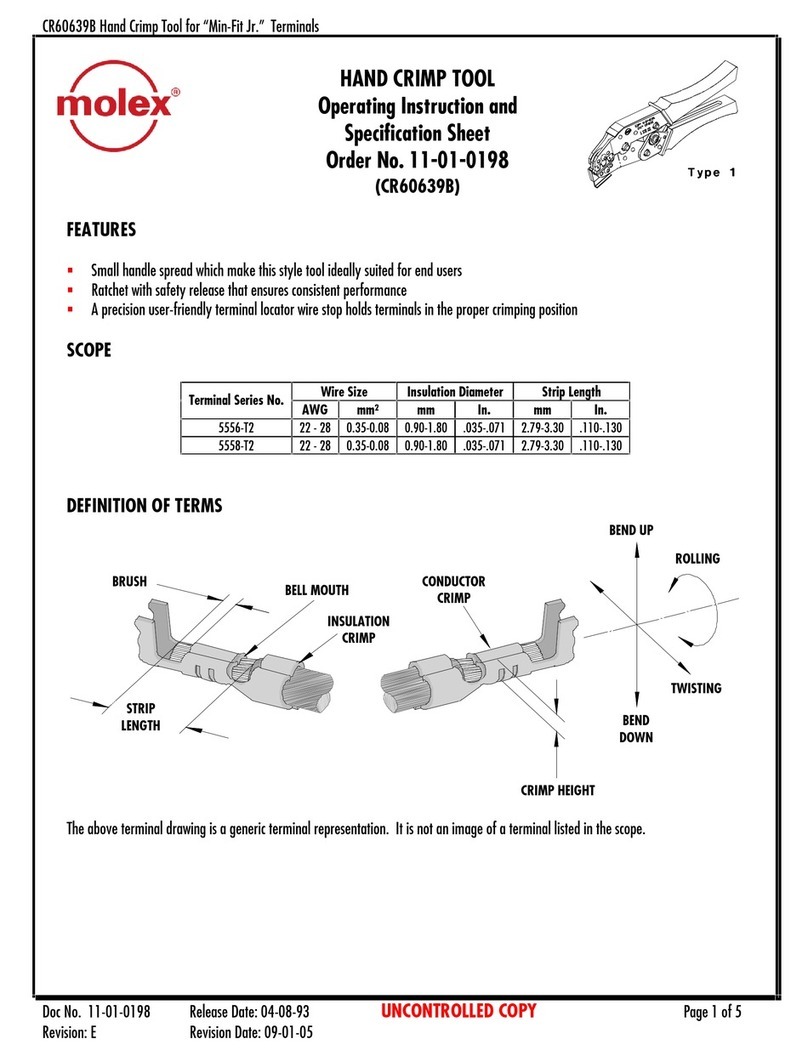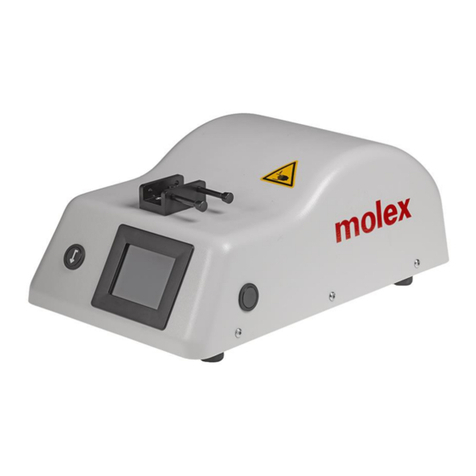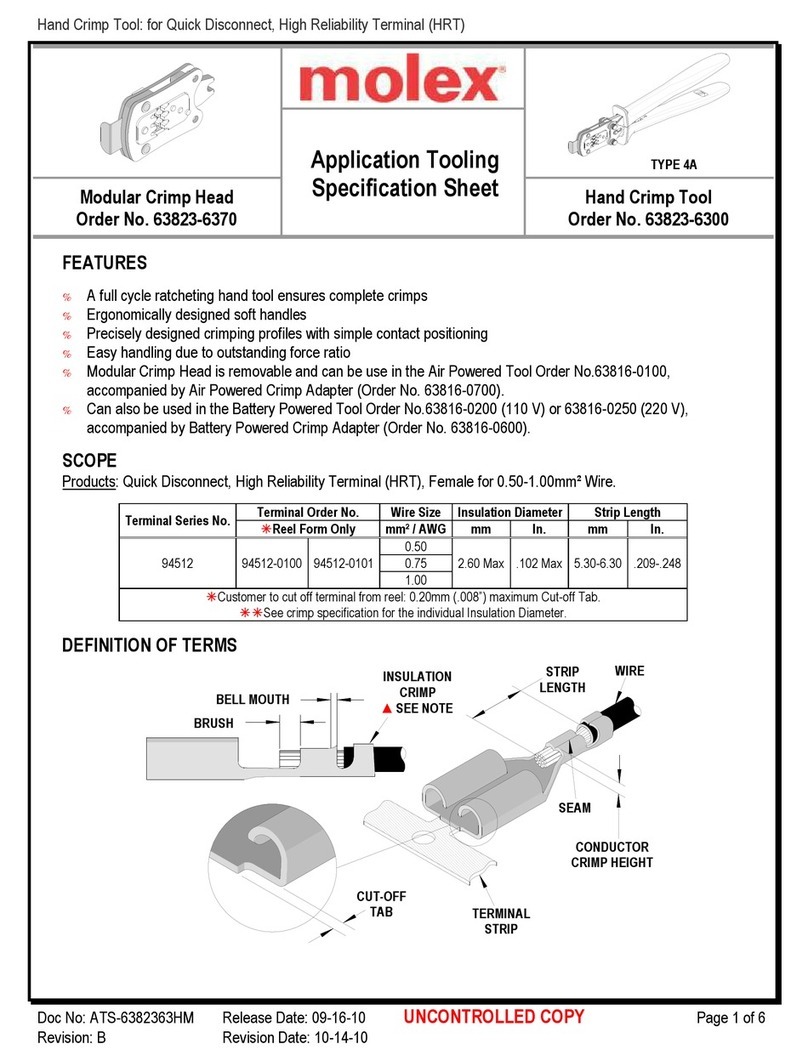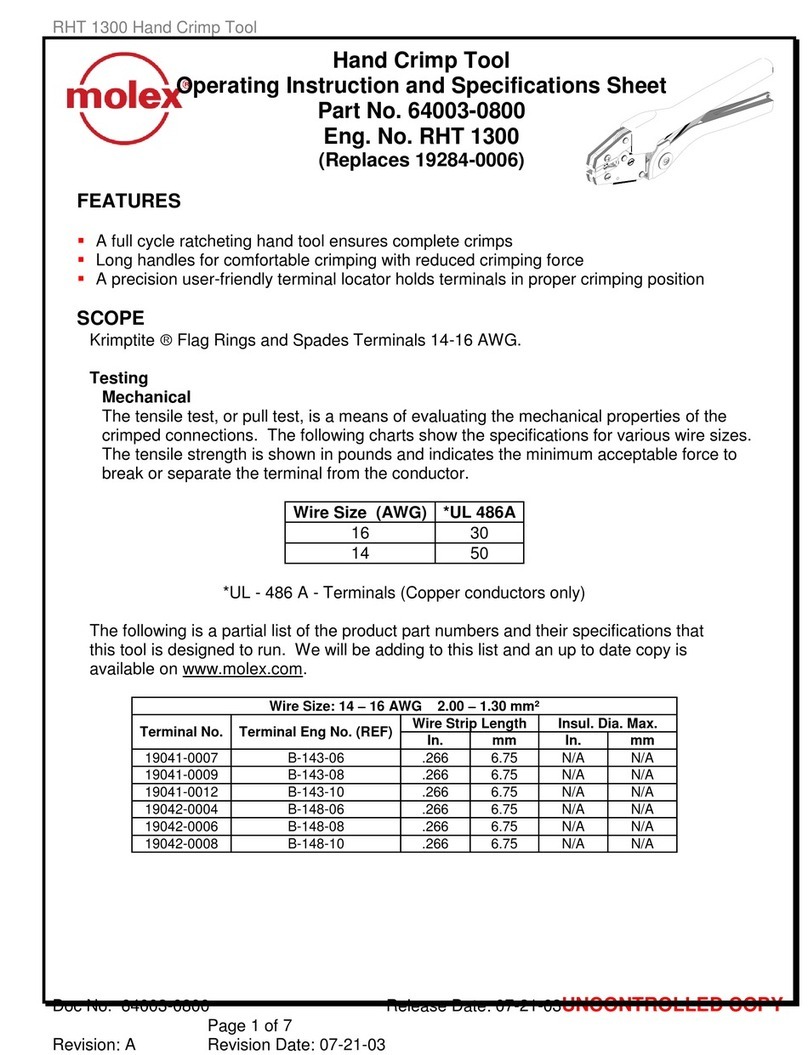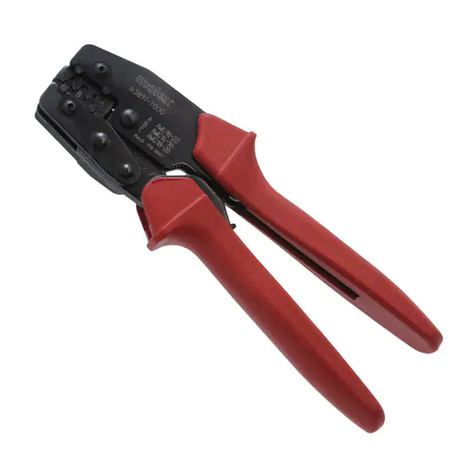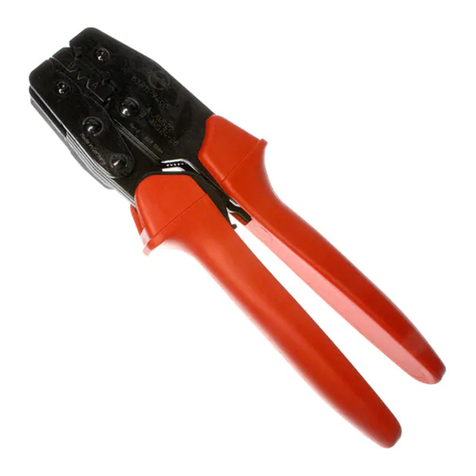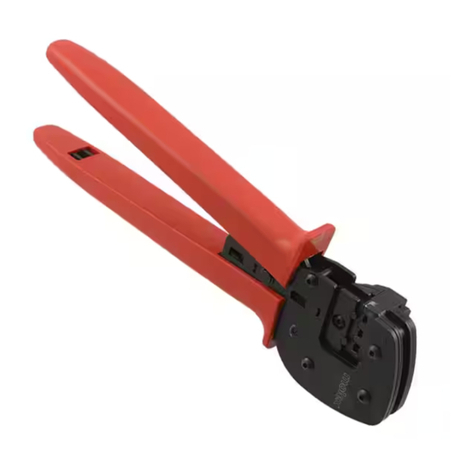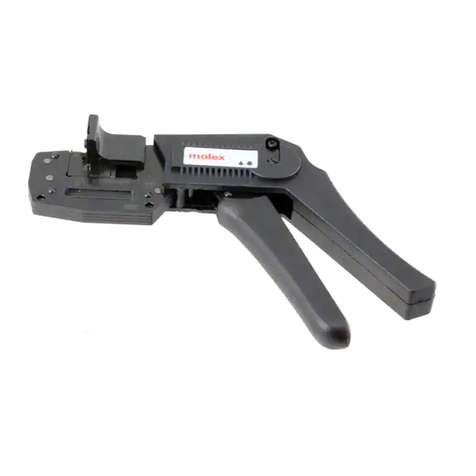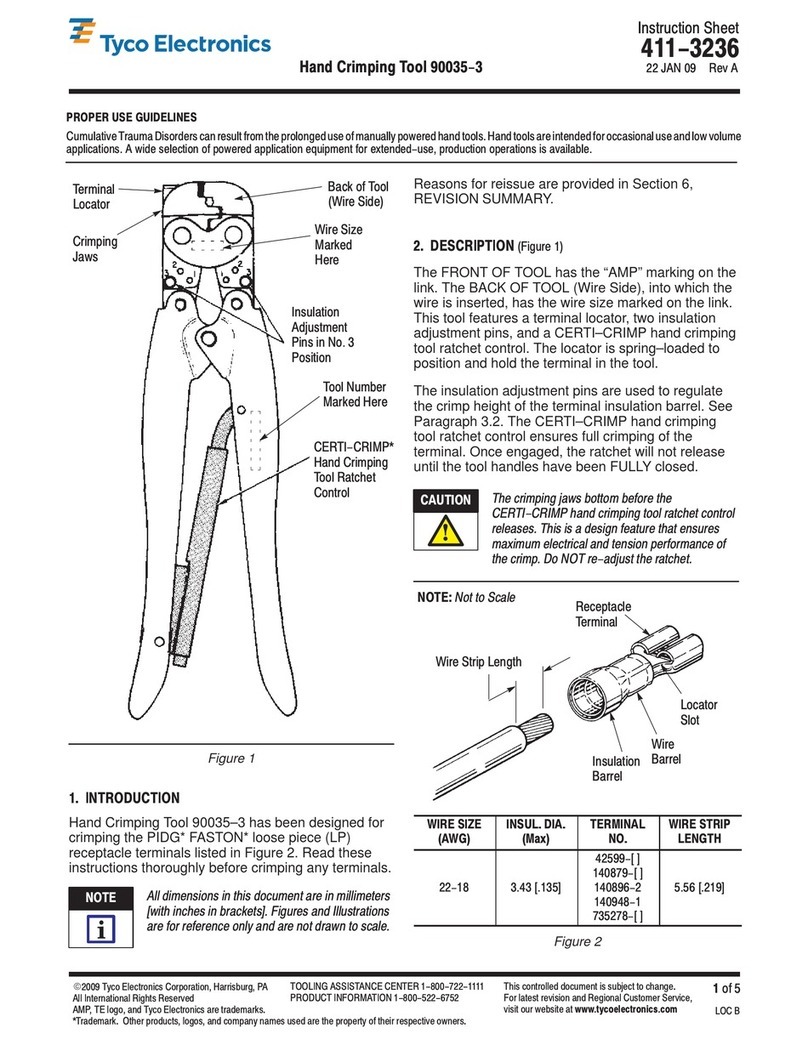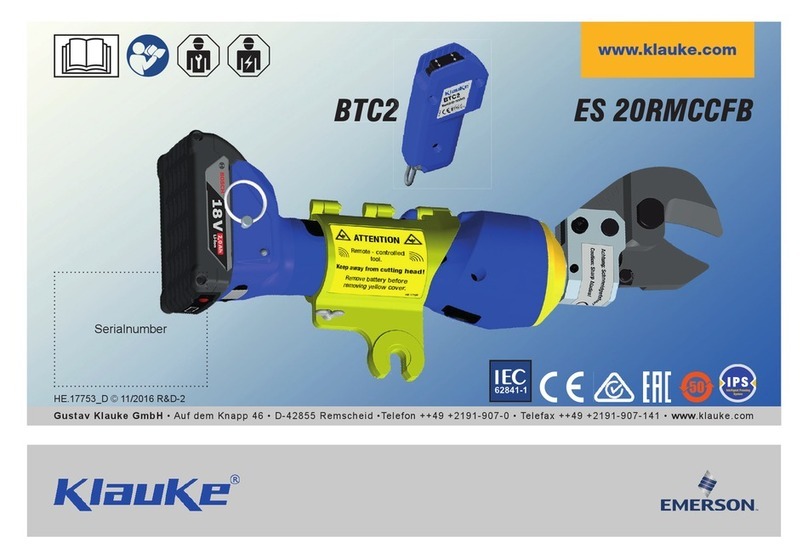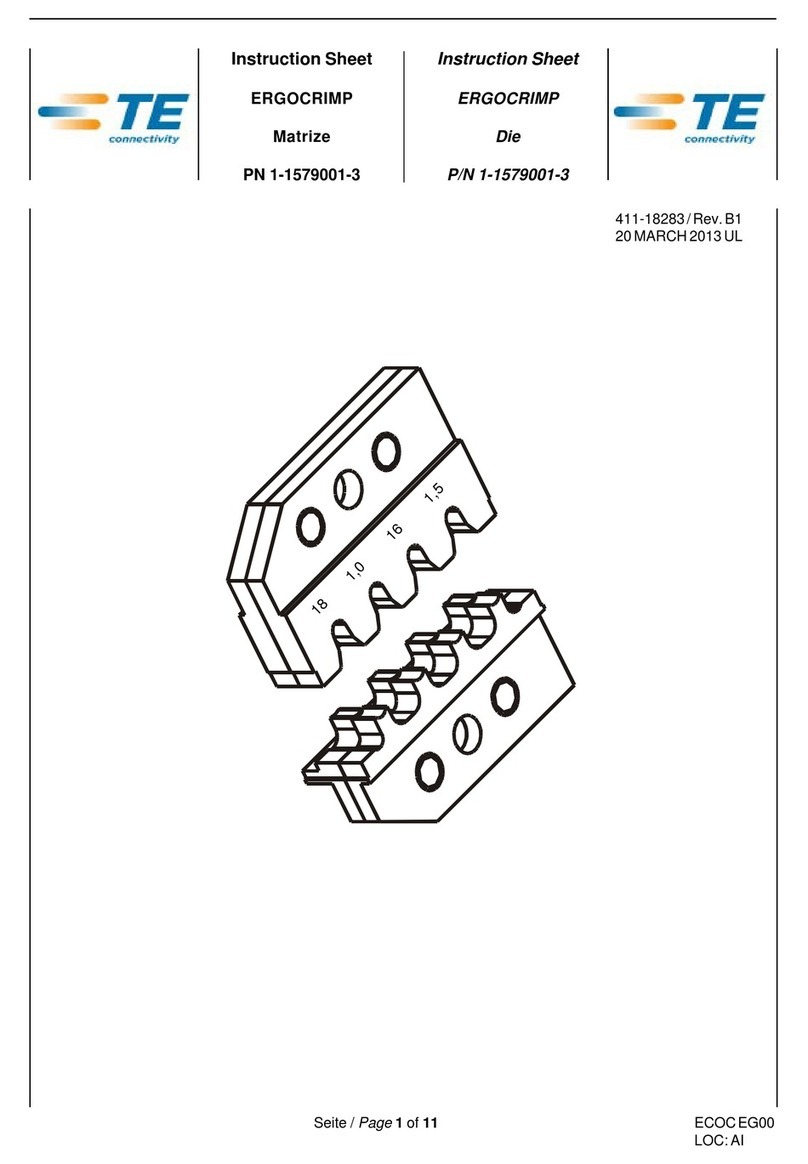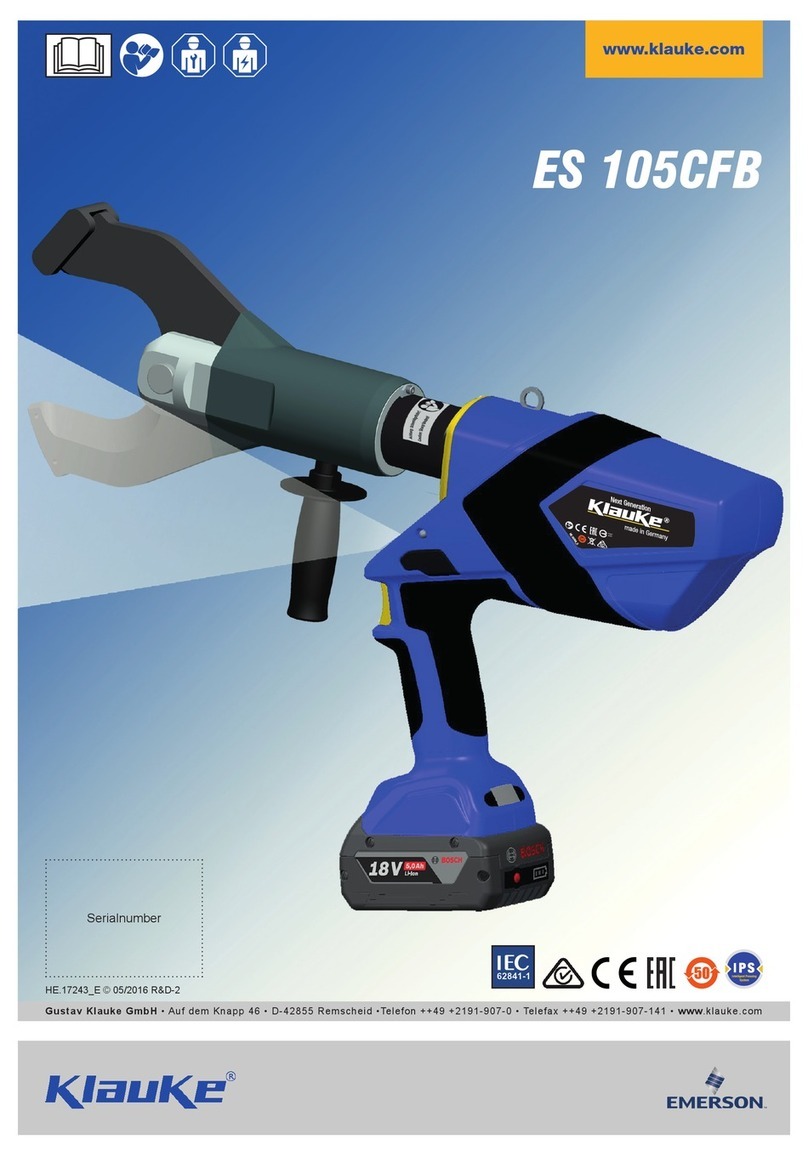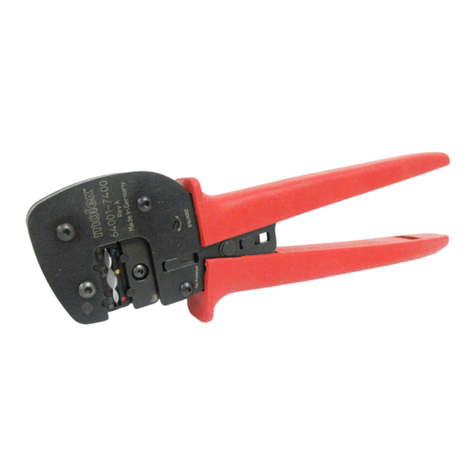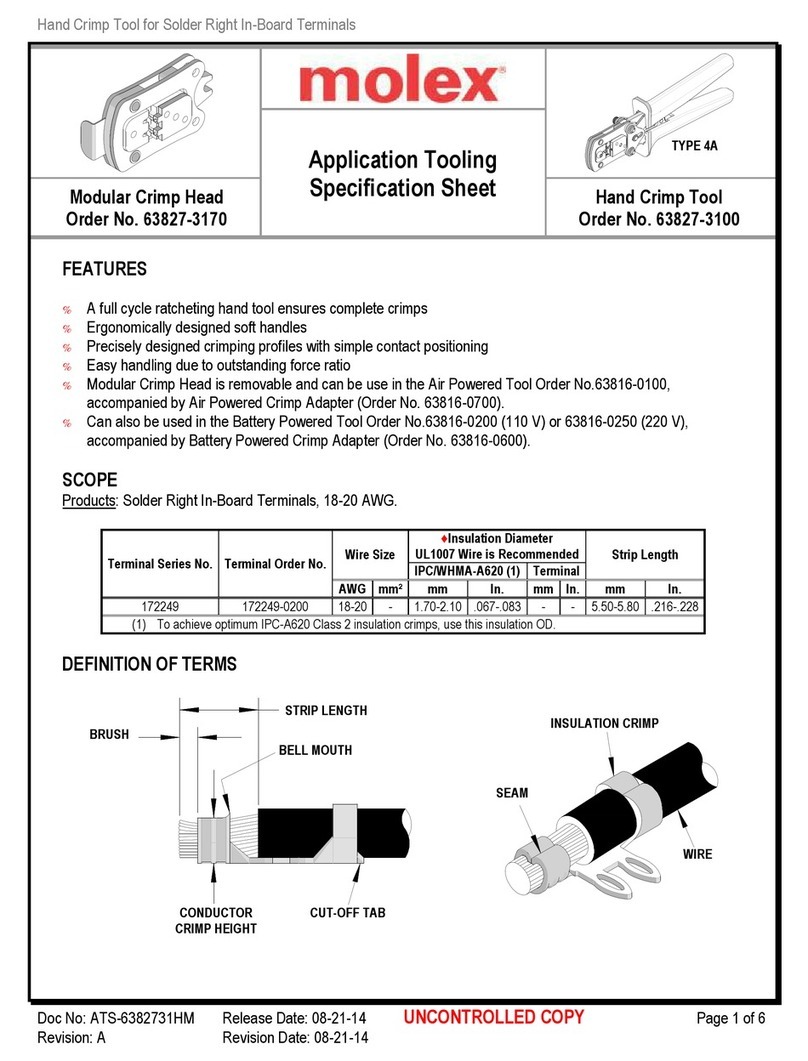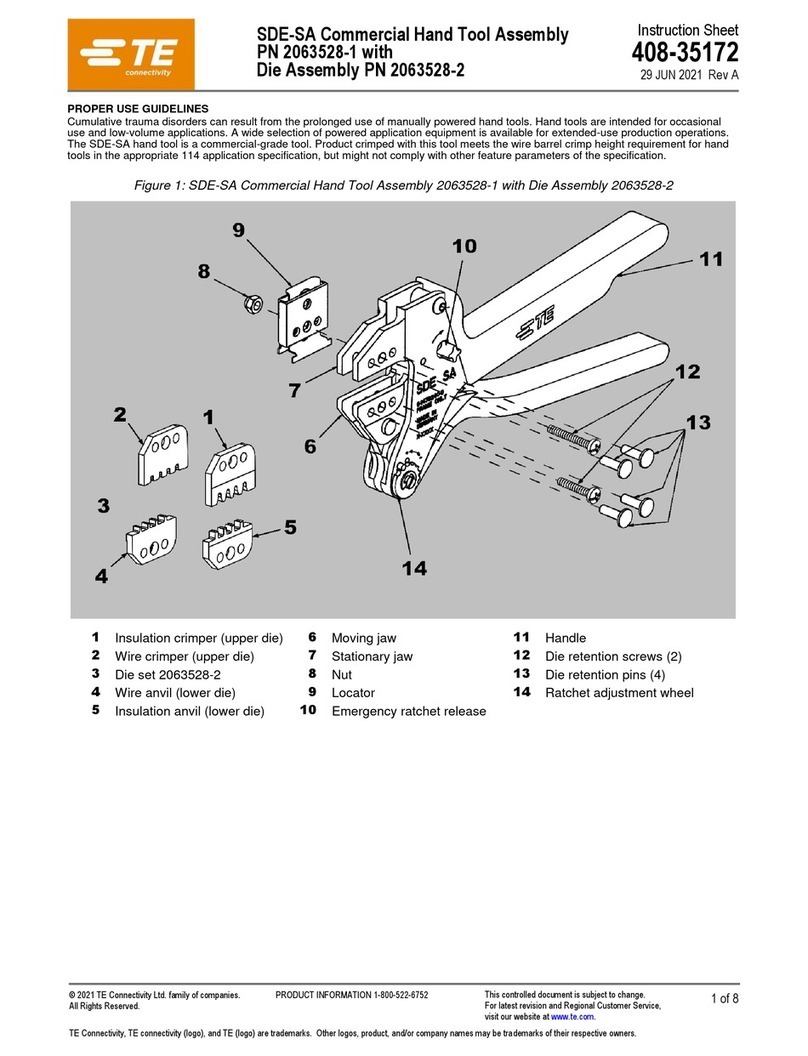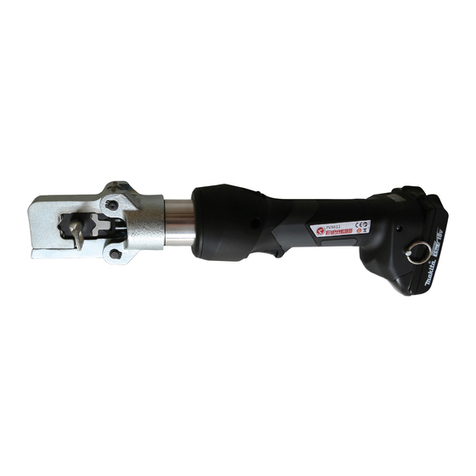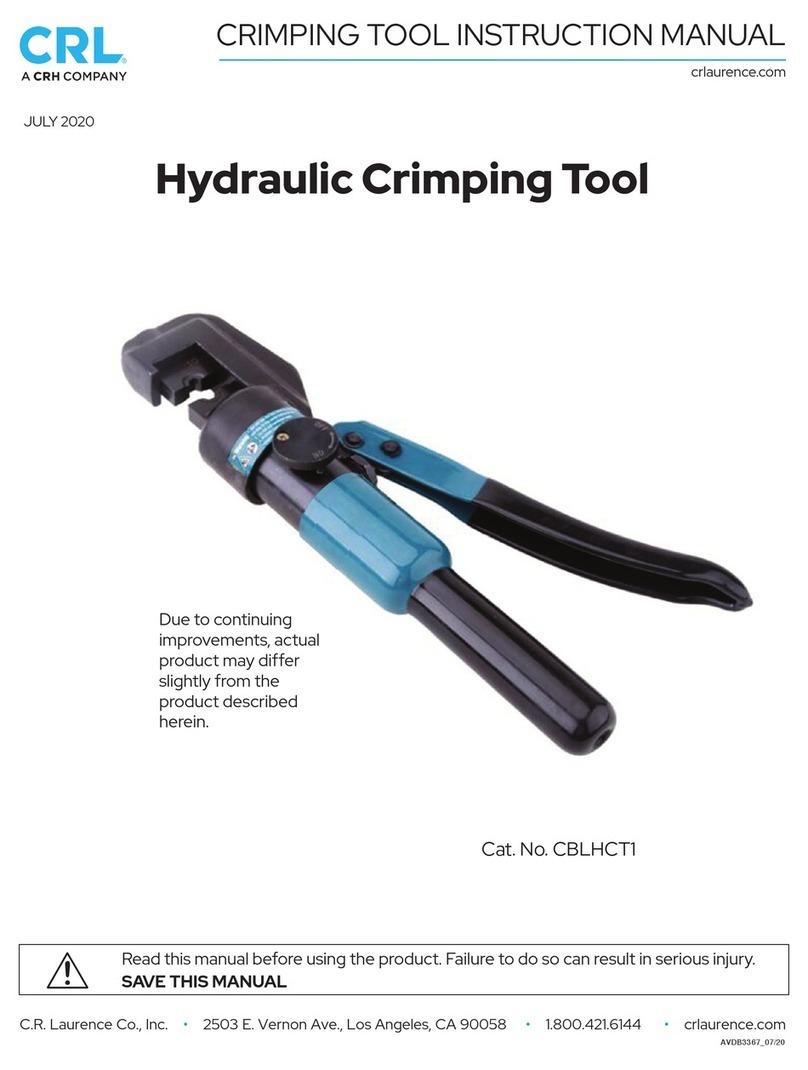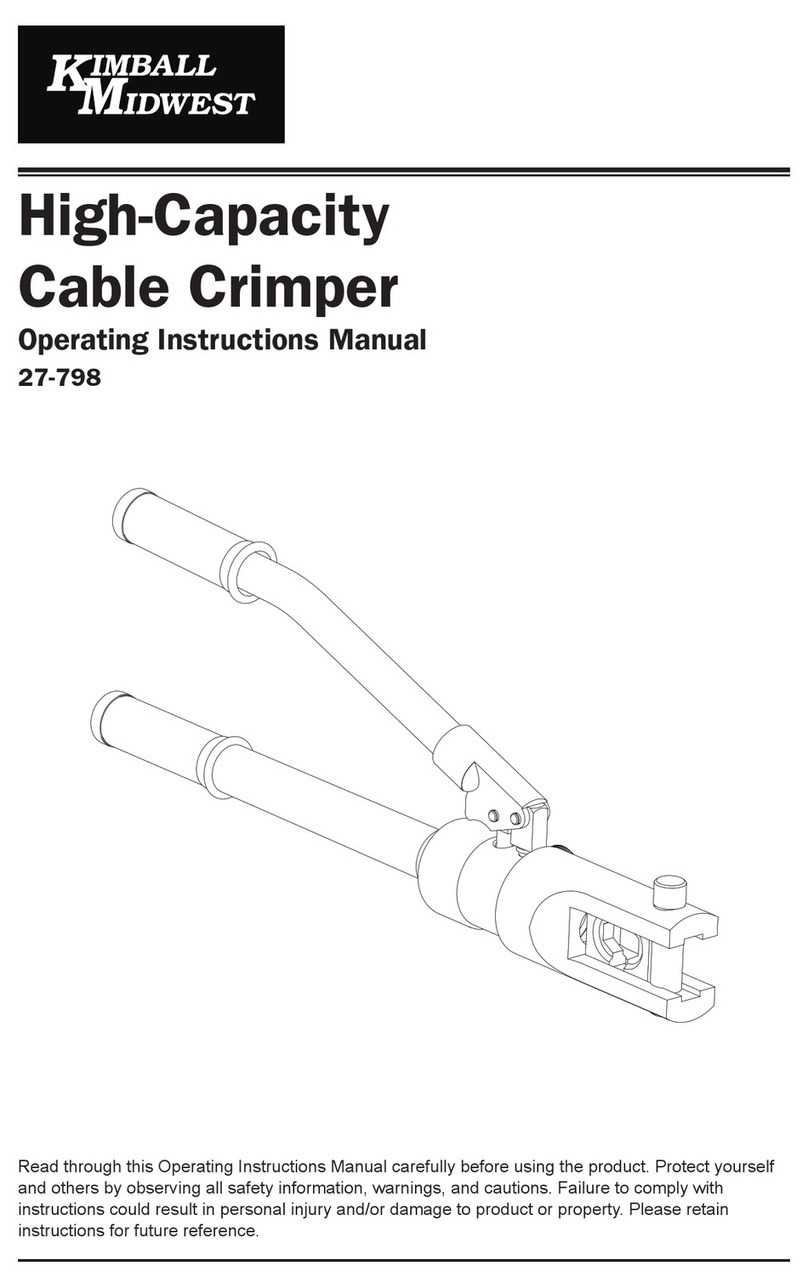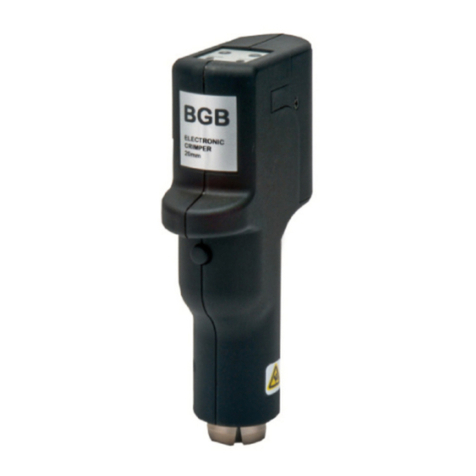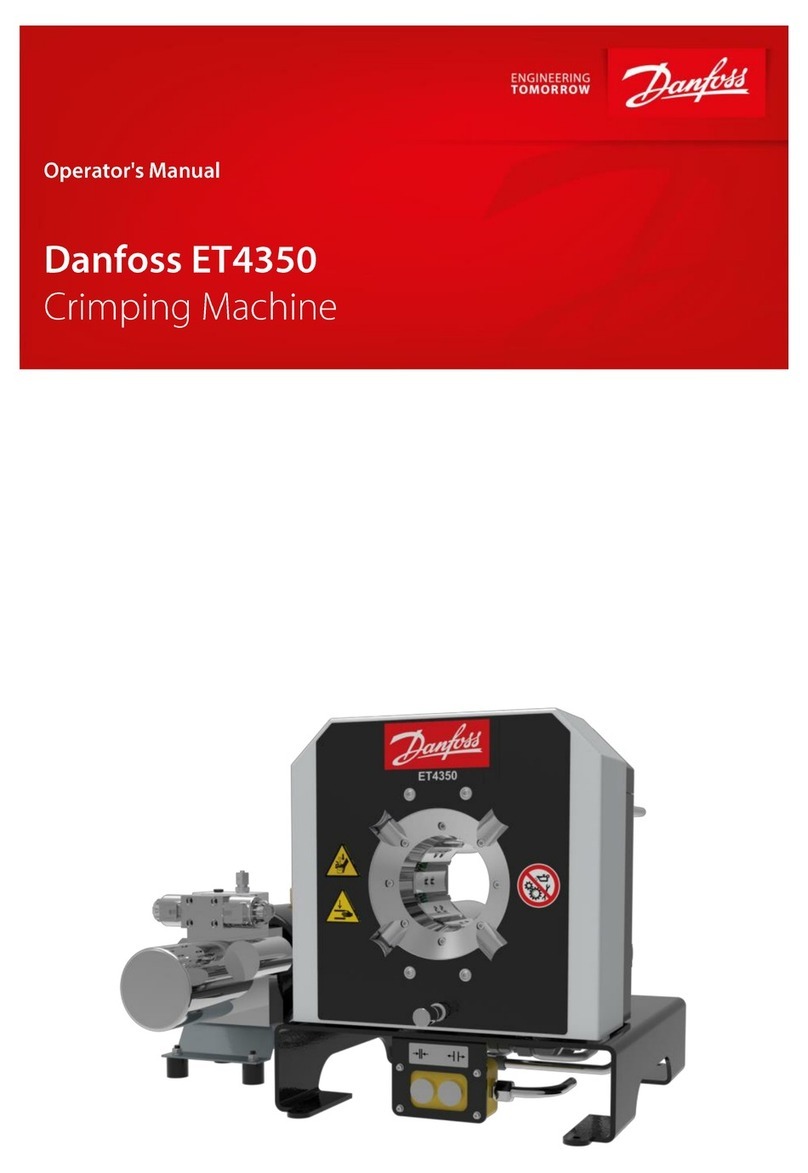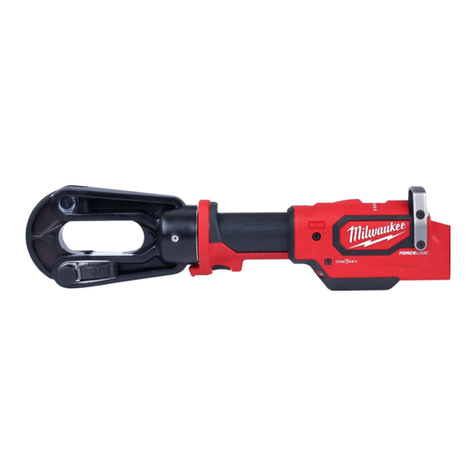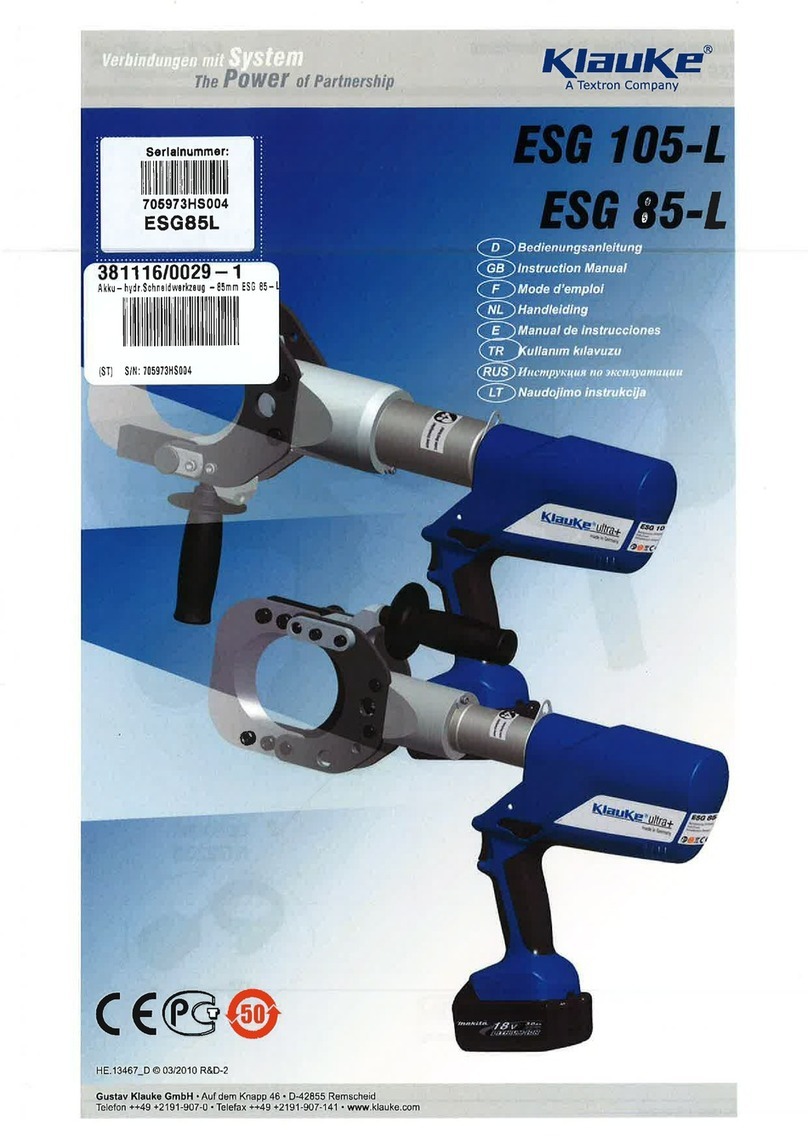
Hand Crimp Tool for FIQD Terminals
Doc No: ATS-640160042 elease Date: 07-13-12 UNCONTROLLED COPY Page 3 of 4
evision: A evision Date: 07-13-12
BARREL
CONDUCTOR ANVIL
PUNCH
WIRE
5. While holding the wire in place, slowly close the handles of the tool. If a jam occurs, stop closing the tool and
release the anti-backup ratchet located on the top of the tool. Pushing it forward will release the jaws. See
Figure 4.
6. Continue to close the tool handles until the anti-backup ratchet releases. Allow the handles to open.
7. emove the crimped terminal from the tool.
8. Inspect the crimp for loose wire strands, missing crimp, or other damage. Any minor terminal bending may be
straightened by hand.
Crimping Butt Splices
1. Position the splice into the desired nest.
2. Partially close the tool to hold the splice in place.
3. Insert the properly stripped wire into the splice. The wires end
should butt against the tab in the terminal. See Figure 3.
4. Continue to close the tool handles until the anti-backup ratchet
releases. Allow the handles to open.
5. emove the crimped splice. Inspect for proper crimp location.
6. otate the butt splice terminal 180°, so that the opposite end of
splice is in the nest.
7. epeat steps 1 thru 4.
8. Inspect the crimp for loose wire strands, missing crimp, or other
damage. Any minor terminal bending may be straightened by hand.
Maintenance
It is recommended that each operator of the tool be made aware of, and responsible for, the following maintenance
steps:
1. emove dust, moisture, and other contaminants with a clean brush, or
soft, lint free cloth.
2. Do not use any abrasive materials that could damage the tool.
3. Make certain all pins; pivot points and bearing surfaces are protected
with a thin coat of high quality machine oil. Do not oil excessively.
Light oil (such as SAE30W oil) applied at the oil points, shown in
Figure 3, every 5,000 crimps or 3 months, is recommended.
4. Wipe excess oil from hand tool, particularly from crimping area. Oil
transferred from the crimping area onto certain terminations may affect
the electrical characteristics of an application.
5. When tool is not in use, keep the handles closed to prevent objects from becoming lodged in the crimping dies,
and store the tool in a clean, dry area.
Miscrimps or Jams
If the tool ever becomes jammed in a partially closed position, DO NOT
force the handles open or closed. The tool will open by lifting the ratchet
release lever. See Figure 4.
LEVER
